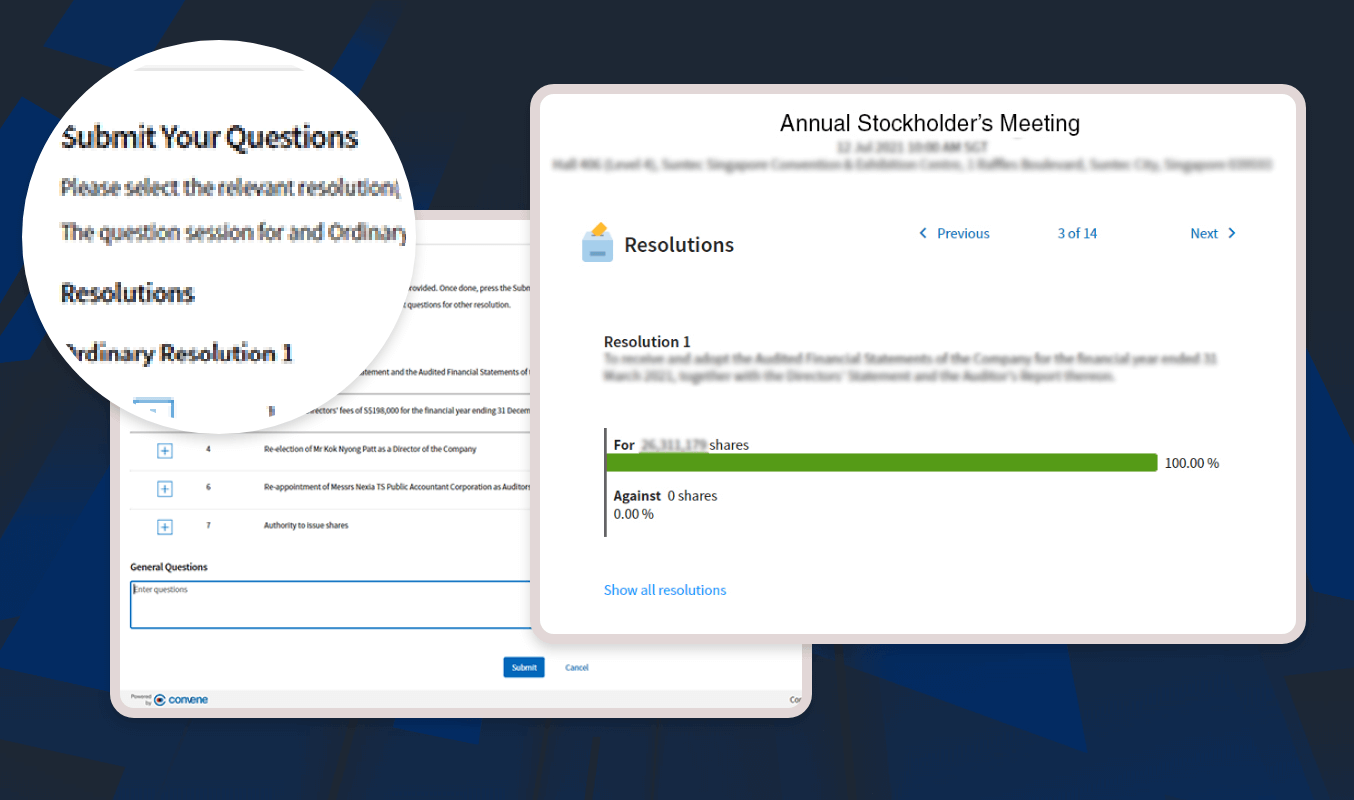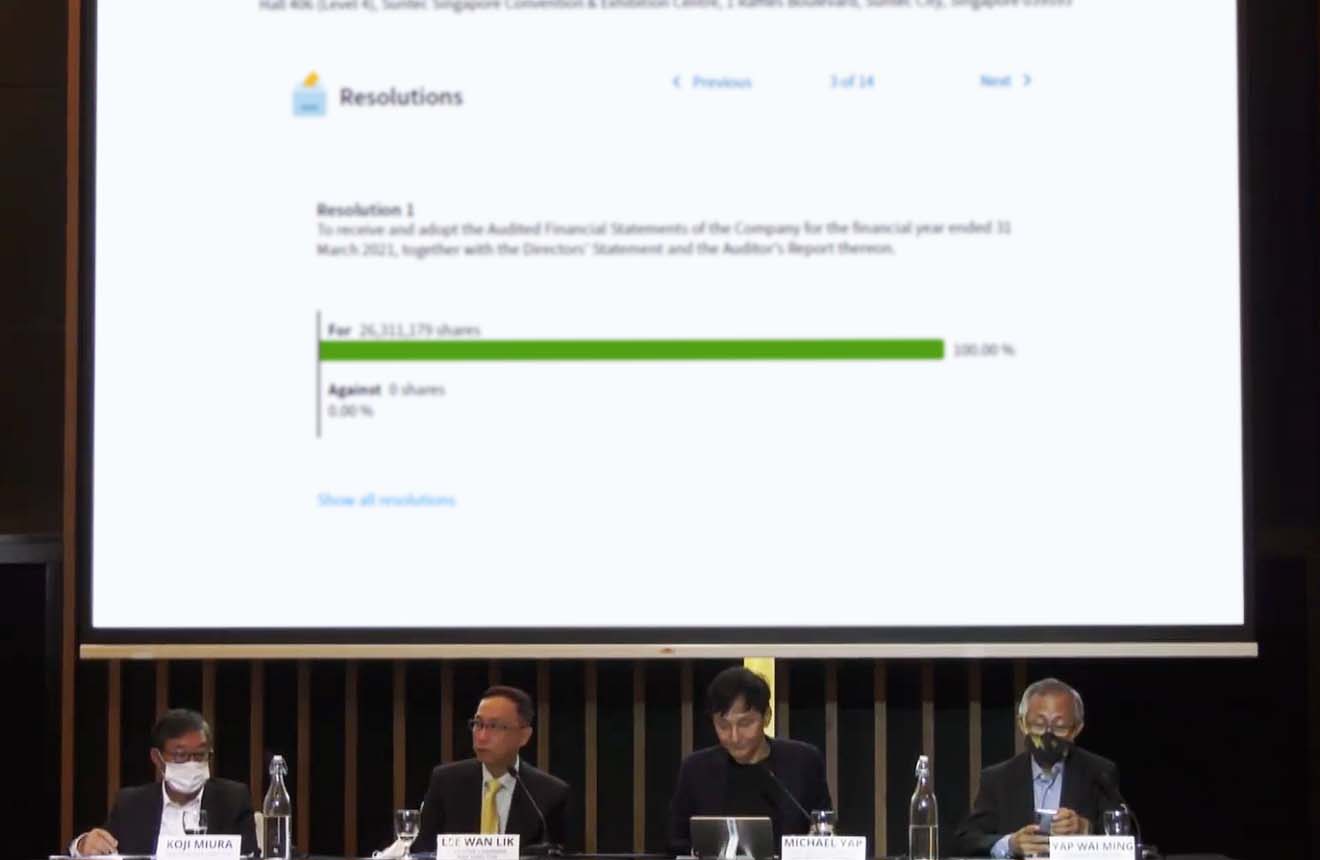Corporate formalities are essential for every organization’s unique structure. These include fiduciary duties, financial record-keeping, as well as special and scheduled meetings. Speaking of corporate meetings, an annual stockholders’ meeting (ASM) is a statutory requirement for all Philippine corporations. This formality is highly essential, requiring careful planning from the cost considerations to the voting rights navigation.
In general, the primary purpose for ASMs is the election of the new board of directors. This provides stockholders with the right to vote, which may be exercised in the bylaws, through remote communication or in absentia. Continue reading to find out why this voting option is necessary and what procedures and factors you should consider.
Conducting Effective In-Absentia Voting

Why is this voting option allowed?
Voting through remote communication or in absentia is an imperative implementation, not just for ASMs, but also for other regular and special corporate meetings. This enables stockholders or members to still exercise their voting rights, even not being physically present in the meeting. Technically, this also allows the group to attain quorum, which is vital for voting and making decisions.
Under Section 11 of the Securities and Exchange Commission’s (SEC) guidelines on corporate meeting attendance, members who participate through in-absentia voting are considered present for quorum purposes.
What requirements and procedures are needed?
According to Section 13 of SEC guidelines, corporations should issue rightful internal procedures for their stockholder’s convenience. These must embody mechanisms for in-absentia voting, from voters’ verification to results recording.
Corporations must set up appropriate requirements and procedures for voting considering the organization’s structure and scale, and the number of members or stockholders. Among the general requirements may include the stockholder’s recent photo and valid government-issued ID, and the representative’s active email address and contact number.
What resolutions acknowledge voting in absentia?
Generally, three types of resolutions may be adopted by the board: (1) Ordinary resolutions are passed by a simple majority of the eligible stockholders who vote in absentia or by proxy; (2) Special resolutions are passed if a majority of not less than 75% of the eligible members are present; (3) Unanimous decisions happen when all eligible directors agree on a matter.
Understanding the Cumulative Voting System
What is cumulative voting?
In the cumulative voting system, a stockholder is entitled to one vote per share and can cast all the votes for a single nominee. If a stockholder has 400 company shares multiplied by four available director positions, a total of 1,600 votes can be used. In cumulative voting, stockholders can opt to allocate their votes to one, two, or all nominees equally or even unequally.
How does it impact your organization?
Cumulative voting can empower minority stockholders, allowing them to elect their preferred candidates. When selecting your new board of directors, this voting system allows your organization to protect your minority stockholders’ interests. In short, you can give more electoral power to the minorities.
How to conduct effective cumulative voting?
In most states, cumulative voting is optional. In the Philippines, however, this is a requirement for corporations. Organizations adopting this voting system must also consider its governing documents. As to allow members to exercise their voting rights, a notice of allowing cumulative voting should be given. Organizations must inform minority stockholders about their rights to prevent decision-making failures and violations.
By giving stockholders the flexibility to cast their votes, corporations can guarantee compliance. Many then opt to use modern meeting solutions such as ConveneAGM to accommodate this flexibility. From the quick casting of votes to ensuring accurate results, such solutions are beneficial for hassle-free cumulative voting processes.
Best Practices in Electronic Voting

Voting In absentia
A corporation must first establish internal requirements and procedures before implementing voting in absentia. Some things to account for are the corporation’s scale, structure, and the number of members or stockholders. Corporations must also consider the accessibility of voting procedures for members who cannot attend the election in person. For one, many companies choose to invest in meeting software like ConveneAGM to accommodate this alternative voting method. In doing so, stockholders can effortlessly cast their votes securely.
Cumulative Voting
Before this can empower the minority of stockholders, organizations must first know how to properly execute a cumulative voting structure. Besides referring to the corporation’s governing documents, setting special rules is another practice to consider. For instance, a corporation may set a rule in which a director can only be removed if the votes cast against the removal are equal to or more than the minimum vote counts required in the original election.
Live Voting
Another practice that promotes the voting rights of stockholders is live voting. Many boards use ASM platforms that enable stockholders to cast their votes remotely during the meeting. Implementing live voting allows for greater transparency within the board, and accurate and instant recording of results.
Q&A
Besides live voting, a Q&A is beneficial for boosting stockholder engagement in ASMs. Companies conduct Q&A sessions prior to the voting, helping stockholders to make smarter and more informed voting decisions. Others also have these sessions during the actual ASM to accommodate any other concerns by the members. There are now tons of online voting systems like in ConveneAGM that make it easier for participants to submit pre-set or live questions through text or video.
Automatic Result Tabulation
Counting votes manually can both be daunting and costly. For such reason, automatic tabulation of voting results is highly recommended. This allows organizations to cut costs and improve board trust. To collect or tabulate the election results strategically and securely, it is critical to choose a compliant ASM solution from a credible provider. Doing so can boost transparency and accountability for the members during the ASM, which also leads to better corporate governance.
Implementing in-absentia and cumulative voting in your annual stockholders’ meetings can be challenging. It requires a deep understanding of the electronic voting systems and comprehensive planning with certain guidelines and bylaws to take into account. Besides that, this also calls for an ASM platform that can allow for in-absentia and cumulative voting.
Fortunately, ConveneAGM offers such features, helping organizations stay compliant and empower their members. Simplify the electronic voting process in annual stockholders’ meetings while complying with the SEC voting regulations using ConveneAGM. Request a demo with us today!
Darius is a Corporate Compliance Specialist and has expertise in the areas of regulatory compliance and corporate bylaws. He has helped many organizations improve their governance practices and decision-making processes.




